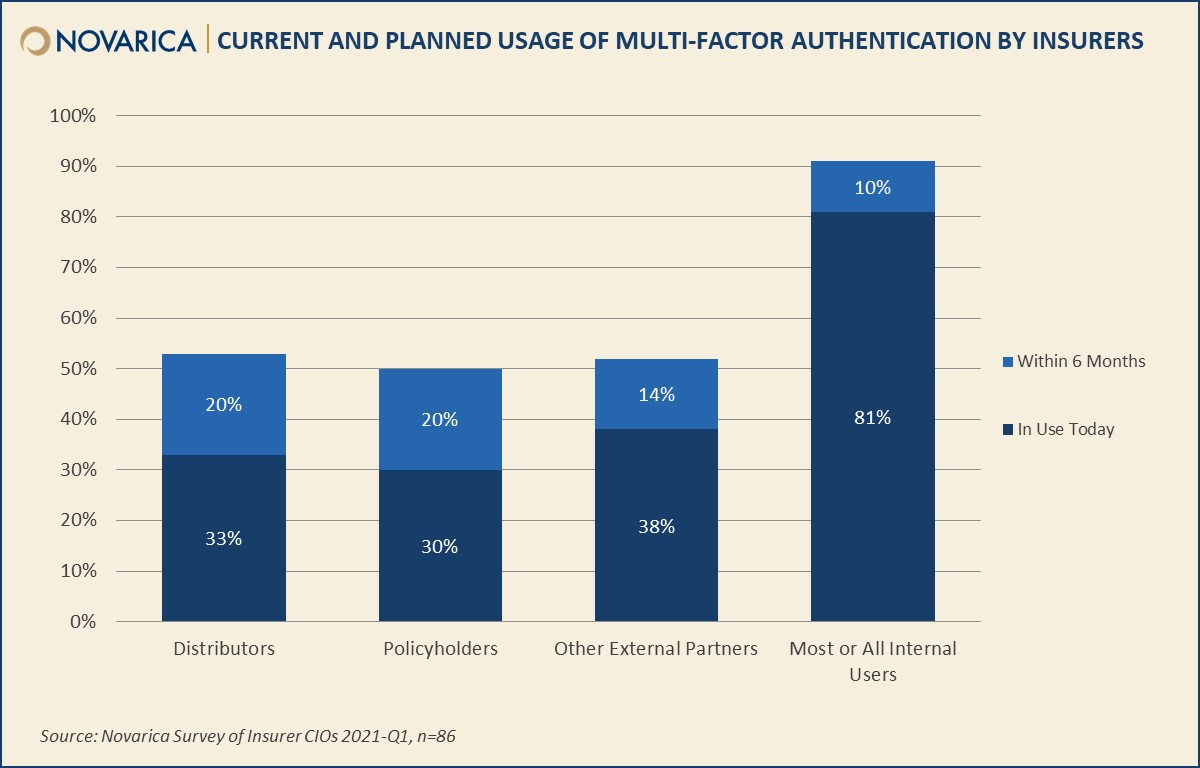April 2021 – As the security threat landscape grows in number and impact, insurers should consider multi-factor authentication (MFA) approaches as part of a broader IT security strategy. This brief provides an overview of multi-factor authentication (MFA), business drivers and use cases in insurance, current and planned usage among insurers, and profiles of 14 prominent providers.

Many insurers have deployed multiple authentication methods, with the primary driver being risk management. MFA is in use both internally and externally. With many insurers forced to enable remote operations during the pandemic, and continuing regulatory pressure for increased data security, multi-factor authentication has gained renewed attention.
Providers profiled in this brief include Broadcom, CyberArk, DeepNet Security, Duo Security (part of Cisco), ForgeRock, Ilantus, Iovation (part of TransUnion), LexisNexis Risk Solutions, Okta, OneLogin, OneSpan, Ping Identity, RSA, and Thales Group.

About the Author

Deb Zawisza
Deb Zawisza is a Senior Principal at Datos Insights. She has expertise in insurance technology leadership and transformation with over 30 years of experience. Prior to joining the firm, Deb was SVP/CIO for Claims/Loss Control at Travelers Insurance, leading core system modernization, expansion of data and analytic capabilities, Agile transformation, and digital initiatives related to property/casualty claims across all lines...
Other Authors

Steven Kaye
Steven Kaye is Head of Knowledge Management at Datos Insights, and lead editor of the firm’s Business and Technology Trends in Insurance series. He has managed a wide range of research projects since joining the firm in 2008. Previously, Steven worked for Accenture as an insurance researcher focused on the U.S. life and property/casualty markets. He also served in both knowledge management...
